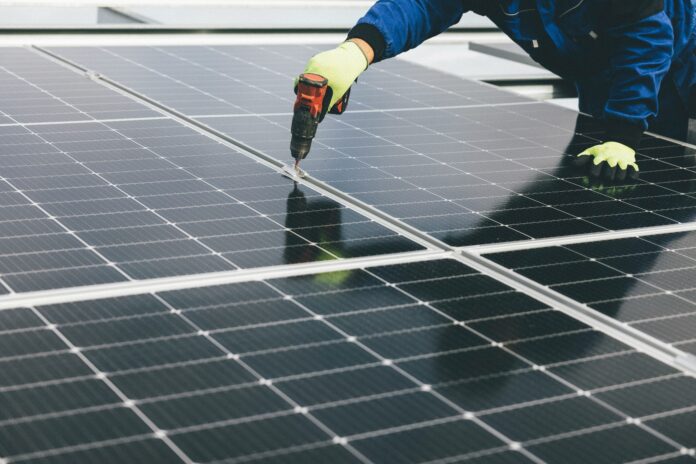
Over the last three years, the Biden administration has strived to introduce strong climate
policies and accelerate the U.S. green transition. This began with the initial banning of new
oil and gas leases and continued with the introduction of a range of favorable climate
policies. While the U.S. is still a major producer of fossil fuels, its green energy capacity has
grown significantly in recent years, with a huge pipeline of renewable energy and clean tech projects for the next decade. As the U.S. government continues to pump money into the renewable energy sector, attracting high levels of private investment, we can expect to see an accelerated green transition over the next couple of years, to put the country in a
competitive position at the global level.
Expectations for 2024 to 2025
Thanks to increased public and private investment in green energy and clean technologies,
the U.S. is experiencing an accelerated green transition, that many other countries are
striving to match. The introduction of favorable climate policies, such as the Bipartisan
Infrastructure Law (BIL) – which includes several energy infrastructure overhauls – and the
Inflation Reduction Act (IRA), has demonstrated the Biden administration’s commitment to
a green transition. This has encouraged a wide range of private companies to invest in green energy and clean tech to support decarbonization efforts.
The government’s introduction of financial incentives, such as tax breaks and grants, has
made green energy and clean technologies more accessible for companies across the U.S.
and is supporting a shift away from fossil fuels to cleaner alternatives. As energy companies and industry strive to decarbonize, we are seeing huge growth in the U.S. renewables market. For example, utility-scale solar generation is expected to increase by around 75% over the next two years, through the addition of around 79,000MW of new capacity. Utility- scale solar, wind and hydro power are expected to provide around double the electricity supplied by coal by 2025, with wind and solar together expected to contribute 18.5% of the total electricity generated in the U.S.
As wind and solar energy production overtakes fossil fuels, battery storage will be key to
managing the reliability issues associated with renewable energy. To that end, U.S. battery
storage capacity is expected to double between the end of 2023 and 2026. To over 40GW.
This is a huge leap from the 1GW of battery storage that existed in the U.S. in 2019.
The increase in renewable energy capacity has not just been supported by climate policies
but also through the falling costs associated with solar, wind and other green energy
projects. Thanks to greater investment in research and development, there have been
several breakthroughs seen in recent years that have resulted in the production of more
powerful green energy equipment at a lower cost. This is not just at the national level but
also globally, with companies worldwide competing to develop innovative green energy
equipment.
Over $1.7 trillion in investment was expected to be spent on technologies such as wind,
solar power, electric vehicles, and batteries worldwide in 2023. This is higher than the investment in fossil fuels, which stood at just over $1 trillion. Fatih Birol, the executive
director of the International Energy Agency, explained, “We look at energy data on a daily
basis, and it’s astonishing what’s happening.” He added, “Clean energy is moving faster than many people think, and it’s become turbocharged lately.”
A Shift Away from Fossil Fuels
As U.S. renewable energy capacity increases substantially over the next few years, we can
expect a reduction in the contribution of fossil fuels to electricity generation. In 2023, the
market share of gas and coal was 58.5%, a figure that is expected to fall to 54.4% by 2025. According to the Energy Information Administration (EIA), coal generation is expected to drop by nearly 18% over the next two years, to supply just 13% of U.S. electricity by 2025. Renewable energy sources and lower-priced gas – which is also lower in carbon emissions – will become more widely used for electricity production. The Institute for Energy Economics and Financial Analysis (IEEFA) expects around 18GW of coal plant capacity to be shut down or converted to burn gas by the end of 2025.
Nevertheless, the U.S. fossil fuel industry is still investing in new coal mines, oil rigs and gas pipelines, and the government has supported an elevated oil and gas output in response to energy shortages following the Russian invasion of Ukraine and subsequent global energy shortages. The U.S. has also been criticized for continuing to fund new large-scale gas operations as the world begins its transition to green, with many energy experts worried that the supply will overtake demand.
The Mid-Term Outlook
Following recent successes in raising U.S. green energy capacity, following the introduction
of favorable climate policies and financial incentives, we can expect a rapid rise in the
country’s green energy capacity over the next few years. The government’s dedication to a
green transition has attracted high levels of private investment to the U.S., from both
domestic and international players, a trend that is expected to continue. While this will
almost certainly lead to a reduction in the contribution of coal for electricity generation, the
U.S. oil and gas industry is expected to continue developing its assets, so long as demand
remains, even as U.S. renewable energy capacity increases.

Felicity Bradstock is a freelance writer specializing in Energy and Industry. She has a Master’s in International Development from the University of Birmingham, UK, and is now based in Mexico City.
















